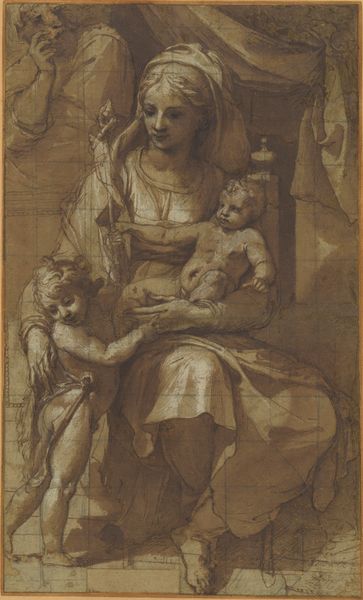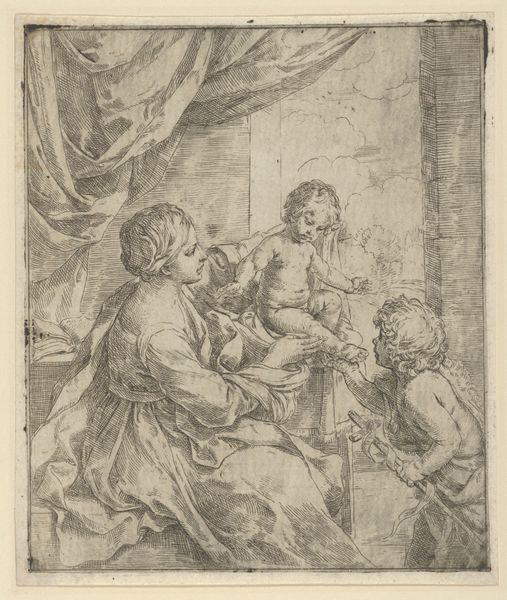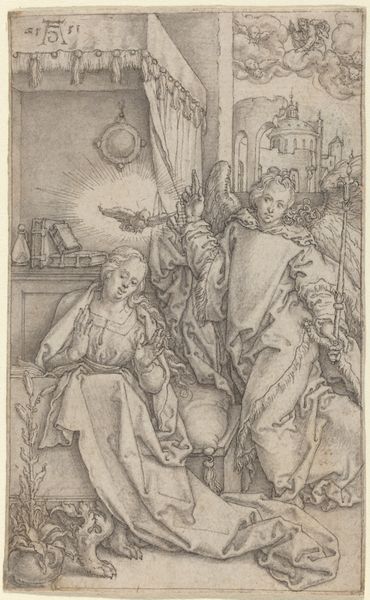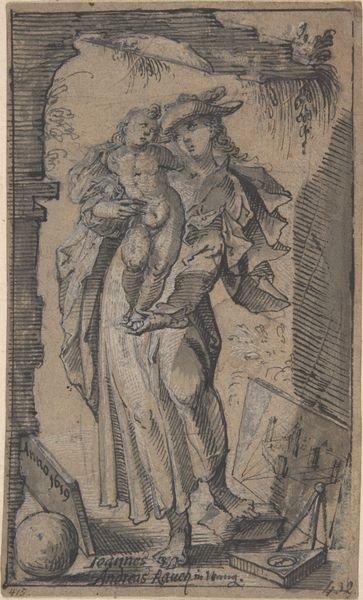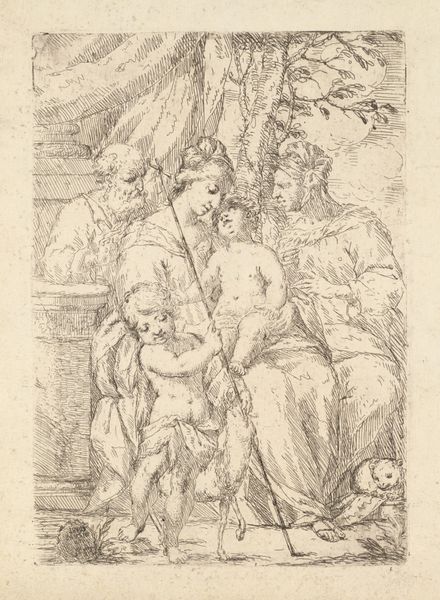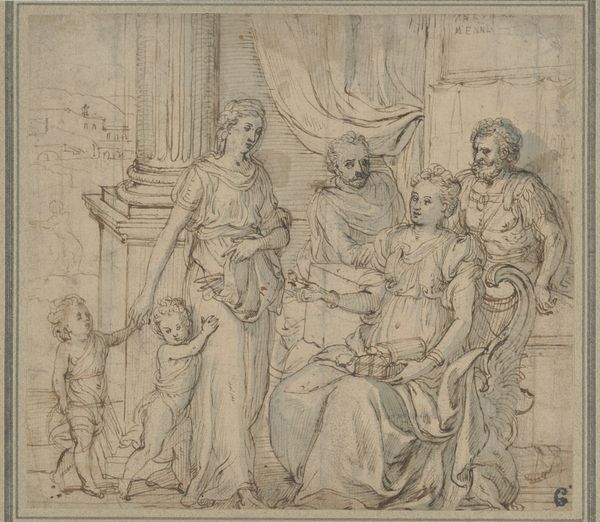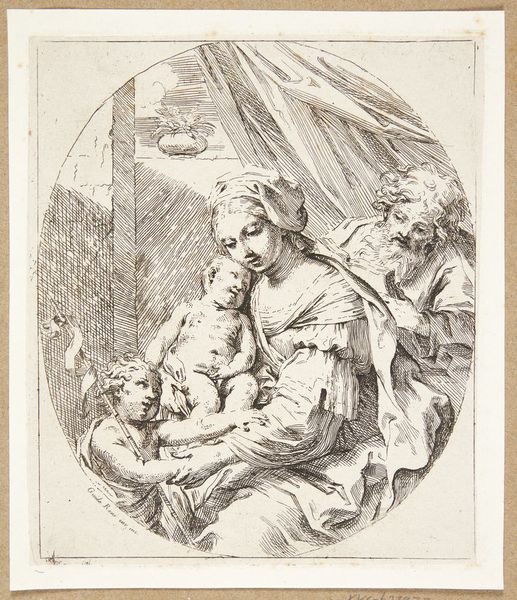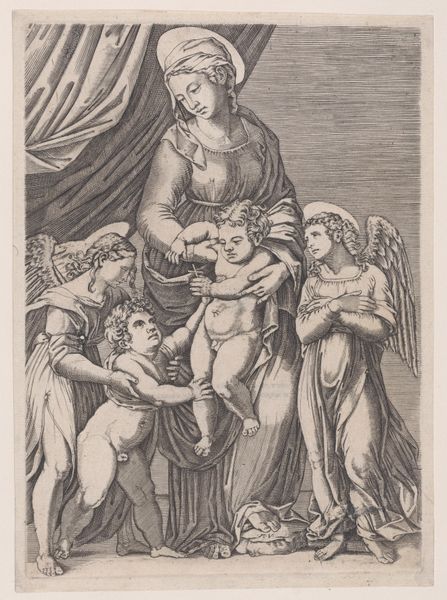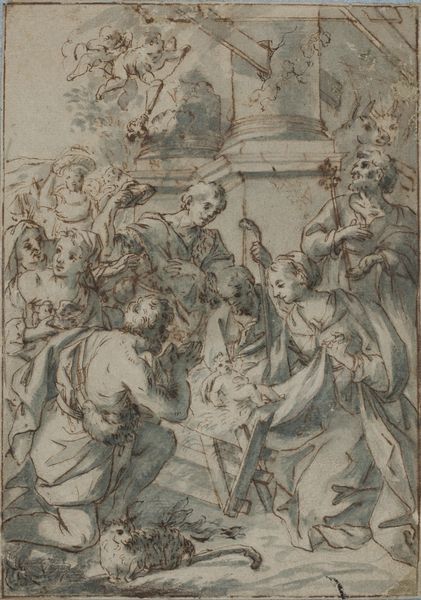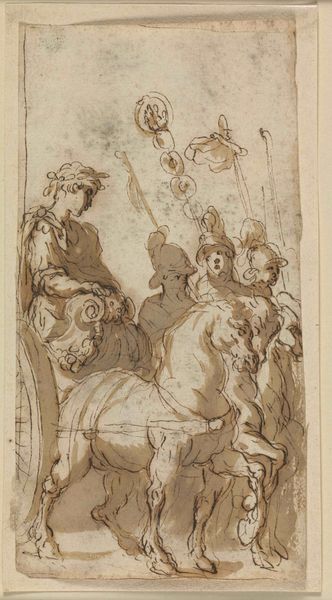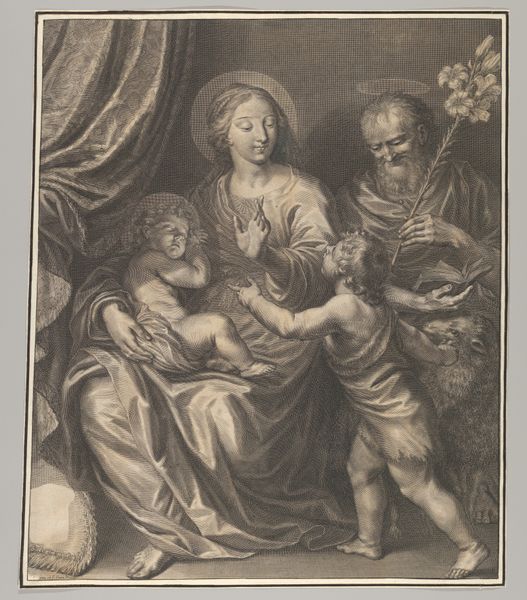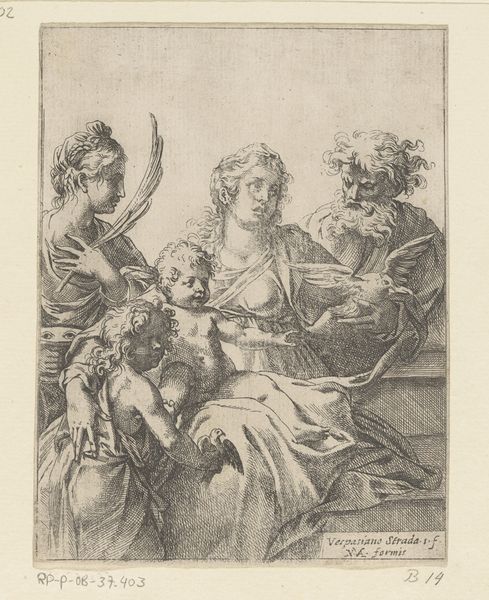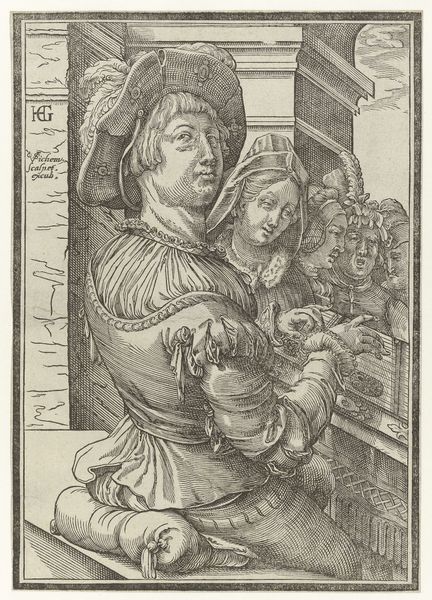
Holy Family with the Infant St. John the Baptist (recto); large-scale cropped sketches of draperies and legs (verso) 1590 - 1592
0:00
0:00
drawing, coloured-pencil, print, pencil
#
portrait
#
drawing
#
coloured-pencil
# print
#
pencil sketch
#
figuration
#
11_renaissance
#
coloured pencil
#
pencil
#
italian-renaissance
Dimensions: Sheet: 8 7/8 × 6 3/4 in. (22.6 × 17.2 cm)
Copyright: Public Domain
Curator: This is Gregorio Pagani's "Holy Family with the Infant St. John the Baptist," dating from about 1590 to 1592. What immediately strikes you about it? Editor: It has a ghostly quality. The muted palette of pencil and colored pencil gives it an ethereal feel, like a vision rather than a concrete depiction. The figures seem to emerge from the paper. Curator: That sensation stems from the artist's calculated use of line and value. Notice how the composition relies on a scaffolding of delicate pencil lines, structuring the figures and drapery. The blue paper provides a unifying ground, allowing the white chalk highlights to truly pop, creating a sense of volume. Editor: For me, the subjects speak volumes too. The grouping of the Holy Family with Saint John echoes contemporary values and struggles surrounding family, legitimacy, and lineage. Are we to interpret this work as a challenge of patriarchal family roles? It humanizes religious icons by placing them within domestic norms, thereby democratizing holiness. Curator: That interpretation certainly resonates given the sociopolitical backdrop. Yet, from a purely formal standpoint, it’s a sophisticated study in Renaissance compositional techniques. The implied pyramid created by the figures focuses our eye, the curves and counter-curves within the drapery imbue movement, creating a unified visual experience independent of any sociopolitical agenda. Editor: It's interesting to see this interplay. Renaissance ideals and religious iconography were never created in a vacuum, as seen by the artist's own political identity, thus they remain influenced by contemporary norms, gendered biases, and power structures. The figures here may inhabit classical forms, yet they cannot exist outside a socio-historical context that informs their representation. Curator: Perhaps that friction is precisely where the artwork finds its enduring power – a constant dialogue between artistic construction and societal construction. Editor: Precisely. And understanding that dialogue is key to unlocking richer interpretations.
Comments
No comments
Be the first to comment and join the conversation on the ultimate creative platform.
